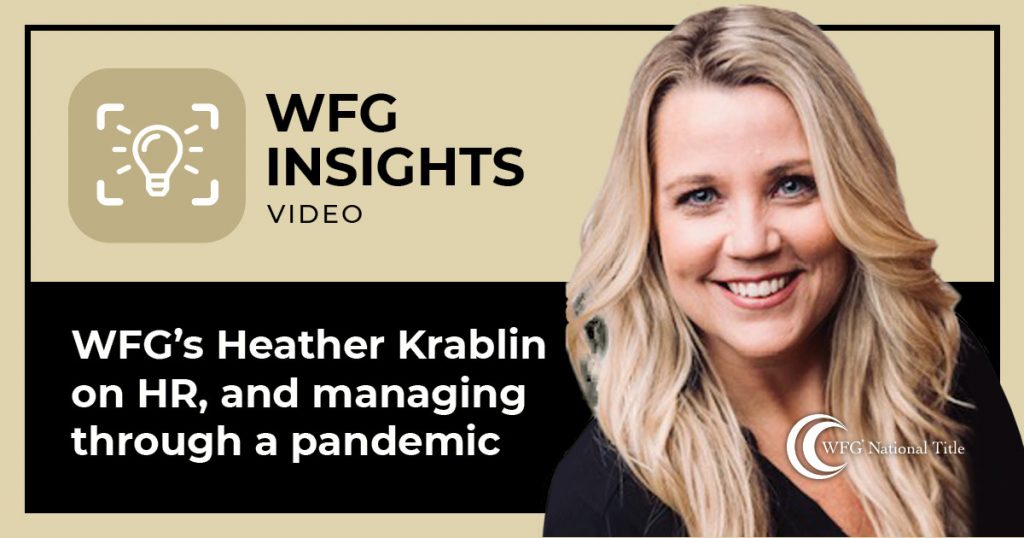
Starting any new job is a challenge, but for Heather Krablin, stepping in as WFG’s Chief Human Resources Officer days before a pandemic swept the globe meant hopping in at top speed and drawing the road map as she went.
“I was very thankful that [WFG] already had [a pandemic response plan],” she tells Brian Bushlach in the latest WFG Insights. It was not specific to COVID-19, but “it was a great foundation and certainly had the protocols in place in terms of what type of [Pandemic Response Team] you needed to quickly gather together and what our responsibilities were as far as keeping our employees – and clients – safe and communicated to.”
WFG quickly gathered a Pandemic Response Team with representatives from Legal, Compliance, IT, Information Security, Communications and Marketing, and Krablin representing HR, and, according to Krablin, the team “started working through everything that was thrown at us.”
Because WFG is an essential business, it needed to remain operational. WFG evaluated which roles and responsibilities couldbe done from home, and how to make that happen. In addition to procuring masks, hand sanitizer and Plexiglas shields for those remaining in offices, a consultant was hired to set-up the social distancing protocols.
“We did an addendum to the PTO policy . . . allowing up to 80 hours, and [said if we] have to revisit that, we will. We didn’t want employees to worry about finances or not having enough PTO to use to be able to take care of themselves and their families,” Krablin said.
On top of concerns for personal safety and the pressures of their families in lockdown, WFG employees were coping with record overtime hours due to the record volume spurred by the pandemic. That has required continuing enhancement of WFG’s programs, such as health and wellness; and now that things are beginning to normalize a bit, Krablin is analyzing how to ensure a healthy work-life balance.
“[Work-life balance] has kind of been an overused term over the years,” she says. “But I think the pandemic has really forced us to look at our lives, personally and professionally, for what’s important. It may not be business efficiency. It may be business resilience. And how do you implement that type of mindset? That’s really more of the focus at this point.”
The mass remote working will no doubt change work schedules going forward, but just how much will be a task for Krablin and her HR team to assess. “Is this a long-term solution?” she said. “The obvious pros are that we can lessen our overhead, . . . but how do we stay connected and maintain that community and culture that we’ve created at WFG?”
“It’s really a matter of working through all of this and enhancing the programs – onboarding, recruiting, communication, health and wellness. All of those things just need to be dialed up a notch when we’re all remote,” Krablin said.